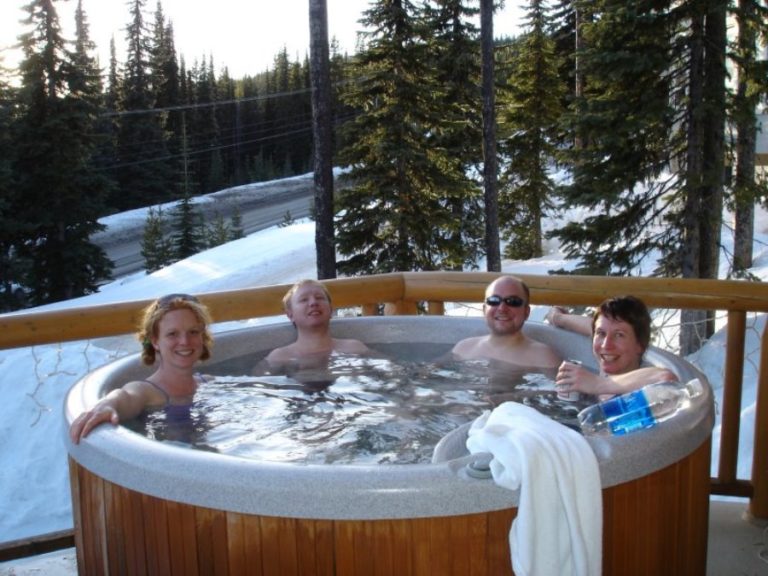How long should you run the filter on a hot tub? What pros say
A hot tub filter is important because it removes the tiny particles of dirt, bacteria, and excess minerals that build up in your hot tub. This will ensure that you get a clean, healthy environment for you and your family to enjoy. The filters should be replaced every 6 months or so, depending on the frequency of use. But how long should a filter work daily to get such a clean hot tub?
How long should you run the filter on a hot tub:
Generally, a hot tub filter should run at least twice a day for 2 to 6 hours. For occasional usage, 2 hours will be fine. For heavy use, 4 hours or longer is recommended. Regularly check your hot tub filter and clean it when needed. A clean filter will make the work for your pump easier, so it will last longer.

In this blog post, I will further explain how long you should run a filter on your hot tub. I will also answer some other questions, like what is the best location for your hot tub. How far it should be away from the house, and what the best color is.
Contents
How long should you run the filter on a hot tub
The filters of the tub should run at least two times a day. If you do not use your hot tub regularly or with a limited amount of persons, 2 hours twice a day is fine. If you are a heady user, increase the time to 4 or 6 hours. Ensure that you clean the filter regularly.
During the filtration cycles, the water in the spa moves through the filters. It helps to remove unwanted items and to spreads the sanitizer in the water. However, how often you should run the filter in your tub depends on several factors:
– Quality of Water:
If you use clean water low in minerals and metal content, you can afford to turn filters on lesser than the default settings.
– Frequency of use:
if you use the tub once a week, no need to run the filters four times a day. That will be excessive stress on the pumps and an uptick in your utility bills. But if multiple users use it daily, it is essential to run the filters more often. With a minimum of two hours for each cycle. You can bring down the filtering frequency further if you are leaving the tub unused for a vacation.
– Presence of debris:
if your tub location attracts dirt and debris, it might need a more frequent filtration cycle. The same applies if you have users who bring in debris like fibers from swimsuits. When you use it more often, there is a need for sanitizer in the water to reach everywhere. It stops bacterial growth from sweat and other fecal secretions from the users' bodies.
– Type of pump:
Some energy-efficient spas use a pump that needs to run 24/7. Those pumps use less electricity than regular pumps, even when constantly running. Those pumps are less powerful and need to run constantly to clean the spa.
– Increase in power bills:
A hot tub can use a lot of electricity. The biggest culprit is normally the heater, but also the pump is a serious user. You can bring it down by tweaking the settings.
Many tubs come with a default setting to keep the filters running at least four times a day, with each cycle of two hours. It means your tub's filter pumps will kick in every 6 hours.
If you use your tub infrequently and it is covered, you can tweak it to only once in 12 hours, just one hour each time. This will decrease energy usage and extend the pump life.
If you have changed the settings, regularly check if the hot tub is cleaned properly. If not, you should increase the duration. If it stays really clean, you could try to lower the duration.
– Weather Conditions:
Another factor that decides the filter running time is the weather condition. Filters need to be run more often and longer in winter. It avoids water freezing in the pipes inside the tub. I recommend you run the filters for longer during the coldest times of the night. This is to avoid frozen water damaging the pipes, the pump, and the filter.
Where is the best location for a hot tub?
Generally, look for a location with enough space around the hot tub. It needs to have an electrical outlet with enough power close. The floor needs to be strong enough to bear the weight of a fully-loaded tub. If possible, a location shielded from the wind and not under or close to a tree.
While looking for the best locations for your hot tub, consider the following aspects:
– Available space around the tub
It is perhaps the most important thing to keep in mind. Wherever you install the tub, there should be at least three feet of space available around it. It is to make sure that there is enough space to access the side panels of the tub in case of any maintenance work.
If you have placed it on a raised deck or a similar platform, ensure that the pipes are accessible in case they need to be checked.
– Electrical safety
Your hot tub is a huge fixture which deals with electricity and huge quantities of water when it runs full-fledged. Both these things coming together can create some very unpleasant situations.
As a thumb rule, hot tubs installation should be at least 5 feet away from all metal surfaces, other electrical appliances, and outlets. There should be a cut-off switch within five feet of the spa that is within sight and accessible.
These requirements may slightly differ according to local building safety codes. Make sure to review the safety codes applicable in your place before deciding the location of the spa. Also, avoid overhead electrical wires or already existing buried electrical circuits while picking your spa location.
Ensure that the outlet you use for your hot tub can cope with the heater and pump running simultaneously. Check the user manual or with the supplier how much this will be.
– The surroundings
Consider the landscaping and the other structures around to ensure that the tub goes in well with the view, not sticking out as an eye-sore. The location should allow water to drain away from the tub, not the other way.
Make sure to place the tub away from shrubbery and other vegetation. It will help avoid debris getting into the pool with wind or when users step in after walking through dry leaves. Avoid placing in grass or muddy areas because the location will affect the longevity of the filters and tub because of the dirt getting into the tub and clogging the filters.
– Humidity load
The hot tub generates humid air, which may negatively impact nearby walls or other structures. For an indoor installation, ensure enough ventilation for the airborne moisture from the tub. Otherwise, sustained exposure to humid air can affect the structural longevity of wooden parts.
Walls exposed to humid air will lead to dry rot and mildew growth. If the tub is on the patio near the windows, the steam from the tub may make them blurry.
– Shield the hot tub from the wind
Try to shield the hot tub from the wind. Getting in and out in the wind will make you feel much colder. And in the wind, the water will cool down significantly faster.
– Structural safety
If you are installing the tub near a retaining wall or any similar surface, make sure that it can support the load of the spa and the water in it. Also, make sure that the tub is at a safe distance from the edge of the wall.
Any surface on which you install the spa should support a minimum weight that is double the deadweight of the spa with water. Also, make sure that the spa will drain without causing hazards when you go for a water change.
Generally, keep the spa covered all the time. However, it is better to pick a location where the hot tub surface will not be exposed to direct sunlight for prolonged periods.
Ideally, keep it at a safe distance from reflective surfaces. Some reflective surfaces like double pane windows produce heat when exposed to sunlight for long hours. It may cause damage to the exterior of a nearby placed spa.
Ensure that the floor is not slippery when wet in indoor spa locations. Water will accumulate around the spa if there is no sufficient drainage. Also, consider space for lifting the cover. It needs enough clearance.
What is the Best Color for a hot tub?
The most popular hot tub color is white and its different shades. But spas in other colors are also brought by users, depending on their taste. A white-colored shell for a hot tub helps to make the water look clean and blue. When it is slightly dirty, it easily shows up. The presence of grit, dirt, or debris is easy to spot in a white spa. Moreover, it does not show up water spots like in dark-colored spa shells. If your tub has a lighting set up, it will look more impressive with a white spa than with dark shaded spa shells.
However, the best spa color is an individual decision. You might prefer a royal black hot tub over a white spa. A black or a dark shell shows less sand and grit. But if the water is heavy with mineral and metal content, it shows water spots and build-up. It is not the case with lighter colors.
Also, consider what color will go fine with the surroundings in which you are installing the hot tub. The color/theme of the installation location should match the color of the hot tub. If you have a lighting system, consider how different lights would feel with the color of the shell.
Do you need access to all sides of a hot tub?
Generally, you should leave at least 3 feet on each side of the spa to offer ample access to all sides. If you have just a few inches, this may still give you enough space to take off the panels. But this space is too small for carrying out any repair.
I recommend having the service panel of the tub fully accessible. It is the area that would be approached often in any case of maintenance works. Ensure no support beams in front of the service panel or across it, restricting you or a technician from carrying out repair work. Ascertain where the heating and filter pumps are located in the tub. That side also needs to be accessed easily.
Moving the tub for a maintenance task to make space to access it is challenging. It could be even more expensive than the maintenance task itself. Tub manufacturers and dealers often don't offer services under warranty if the tub installation does not allow enough access from all sides.
While the service panel and equipment room should be accessible, access to other sides is also helpful. Apart from problems with the pump and filter, a tub can develop a snag anywhere around it. If there is not enough space around it, a leak in the less-accessible area may not get noticed. And with time would turn your tub into a cloggy mess.
How far away can the hot tub be from the house?
Ideally, put hot tubs at least 3 feet away from the outer walls of your house. Putting too close, like a foot away, from the outer walls of your house is not recommended. It leaves no space to access the tub from that side for repairs. Moreover, the moisture from the tub and water splashes can damage the walls over time.
Placing the tub far from the house also has some drawbacks. The installation will be more expensive, as you have to run the cables further. It also involves you walking the distance every time you want to use it or take care of it.






